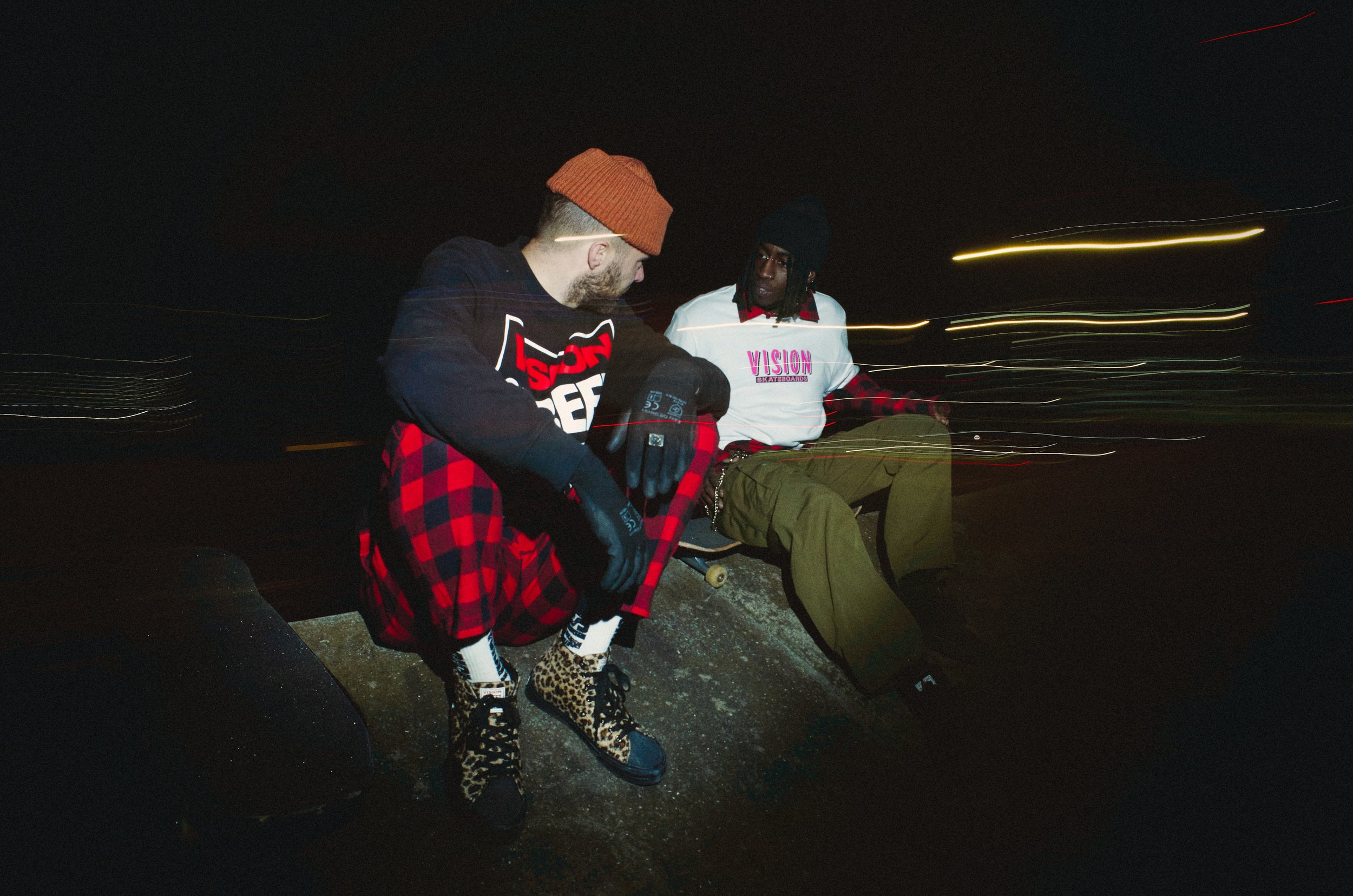FEATURE: VISION STREET WEAR
1976 seems to be the year where skate culture as we know it really kicked off. In that year the first-ever Ollie was pioneered by Alan Gelfand. The very first skate parks were being built across the US. It’s also when punk was born. And, Brad Dorfman started Vision Street Wear, a brand that would go on to bridge the sports and art worlds.
By sponsoring the living legend Mark “Gonz” Gonzales, Vision quickly became a cult hit in skate culture. In the mid ‘80s they released a deck tailored to fit his image — a board featuring a black, white, and neon-coloured cartoon-like depiction of Gonz, and sporting slightly curved edges. The brand and the artist who designed it, Andy Takakjian, then revisited the Gonzales board with an even more distinctive model: the Psycho Stick skateboard, whose uneven contour would become iconic. A cultural landmark of its own, they’d hold music and skateboarding events, one in which the Red Hot Chili Peppers and Tony Hawks both headlined.
While all things skateboard-related as well as sweats and tees made up the core of the brand’s offerings, it’s the Ollie Pad that really set Vision apart and, with it, with its hi-top, close-fitting silhouette, they changed the game for skateboarders, for the better. And now, in 2022, the label returns to its roots with an archive collection of the original ‘80s styles — including, respectfully, the trailblazing skate shoe that The Gonz sported back then. Elsewhere in the collection, the original Vision logo graphic pattern as well as punk skulls, boneyard, and jinx leopard graphics are printed across across a full range of apparel, embracing the 70s in all its excess and punk edge and offering an unapologetic nod to the indelible mark they’ve left on skateboarding and style culture.
We caught up with Vision Street Wear’s Brad Dorfman to chat about the brand’s return /
What made you start Vision Street Wear?
Straightforwardly, because I wanted to create my own brand. I was already selling other skate products and I enjoyed creating things, so it made perfect sense to start my own thing.
How did you first start sponsoring Mark Gonzales? Did it all start with the decks?
We first met in Orange County. He was an amateur rider at the time, and we started out with just boards to begin with. But when we turned Mark pro, we’d sell a whole range of products, from apparel to shoes and decks, everything.
Then the Psycho Stick model followed, right? Can you tell us more about its impact on the skate scene?
The Psycho Stick was extremely well received, and to this day is still one of our most iconic designs. Its graphics and shape made it an instant hit, to the point where it eventually ended up on the cover of an INXS album. Funnily enough, the “Psycho” is actually a guy that used to work at Vision back in the day – Gregory Bevington. It was so popular that kids would haunt the shop hoping to catch a glimpse of him, so Gregory had to hide in the back every day to avoid them. The board had these ‘money bumps’ – these little bumps by the rear trucks. It became a trend to include them, and any board that had them was extremely successful. The pros started calling them the money bumps because they were getting bigger royalty cheques from those types of boards when they were seen using them. It was a totally new design, no one had done anything similar, which was why it worked and became so popular. It was the way that boards were going at the time. Kids wanted their board to stand out, to be something unique, and so you start seeing all these different shapes coming into the mainstream.
Was it always clear that you wanted to bridge the sports and art worlds with your brand?
It wasn’t always clear - but art, skateboarding, and music have always worked hand-in-hand, it was a natural progression. We worked with a lot of bands back in the day on Vision, big and small. As you know, the Chilli Peppers played a set at one of our major skate events, Skate Escape. Aerosmith were big fans of the brand as well, and they used to drop by the shop every now and then. I remember back then I used to have a mullet, and there’s a phenomenal picture of me and Steven Tyler, both with our mullets.
What made the Ollie Pad innovative for its time?
The pad was innovative at the time because nobody else was doing it. Whenever the guys did ollies, they were wearing out their shoes in that area, so I designed and patented the Ollie pad with that in mind. It meant that skaters weren’t going through trainers every few weeks.
What’s the brand’s direction today?
We are bringing back OG Vision, relaunched with the respect and attention to detail that it deserves.
















